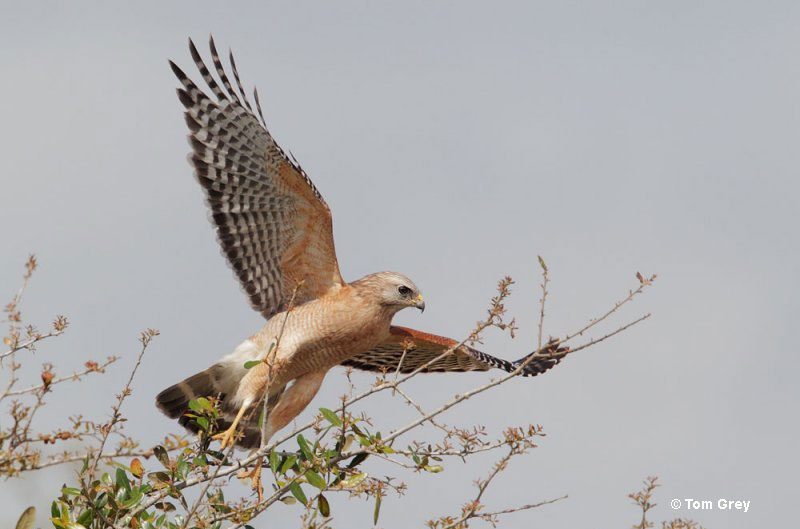
Hawks prey on mice, birds, and other small animals, but what eats hawks? Are there predators that can catch and eat hawks?
Although hawks are fierce and powerful birds, some animals do prey on them. See this article to find out which predators eat hawks!
Do Hawks Have Predators?
Despite being carnivores, hawks do have to be concerned about predators. Compared to smaller birds, there aren’t as many animals that can attack them, but every hawk does face some threats.
In general, smaller hawk species have to worry about more predators than larger hawks. However, given the right circumstances, even some large hawk species can become prey.
Hawks are most vulnerable when sitting on their nest and when they are young. Just like other young birds, baby hawks are defenseless and depend on their parents for protection.
Many adult hawks are capable of attacking and scaring away potential predators. However, if they leave their young alone for too long, the nestlings might be taken by animals like Raccoons, weasels, and other mammals.
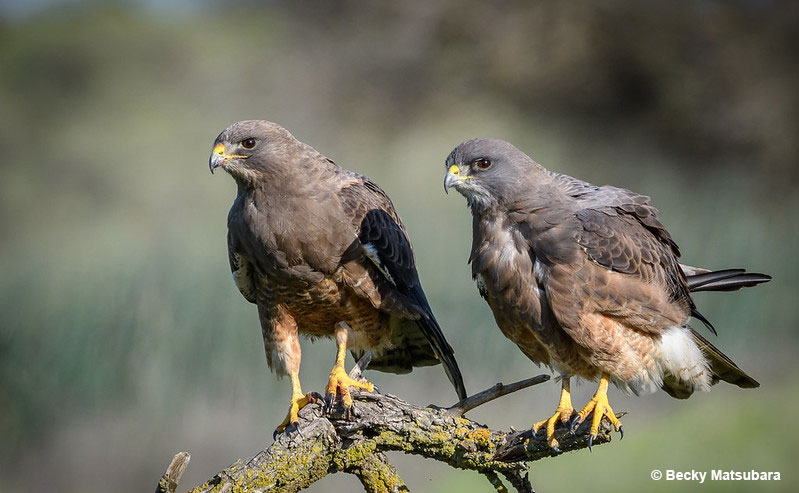
One hawk species, the Northern Harrier, is especially susceptible to being preyed upon by mammals. This ground-nesting species has to be wary of Coyotes, Foxes, and several other mammalian predators.
Various birds of prey occasionally eat hawks, too, especially nestlings. As with all predators, hawks, eagles, and owls are opportunistic.
If they see a chance to prey on another type of young hawk, they’ll probably try and catch it.
Some large birds of prey also prey on adult hawks, in some areas, on a regular basis.
The Main Predators of Hawks
Eagles

Eagles can also catch hawks! However, the two main species that live in North America, the Bald Eagle and the Golden Eagle, only rarely prey on hawks. Both of these species typically hunt other types of prey.
Since hawks also have sharp beaks and talons, it’s a bit risky for eagles to try and catch them. They would rather catch prey that won’t injure them in the process.
Related: What do birds eat?
Even so, if an eagle sees a hawk in trouble or an unwary young bird, it might take advantage of the situation and catch it. Likewise, eagles sometimes prey on nestling hawks.
Bigger Hawks
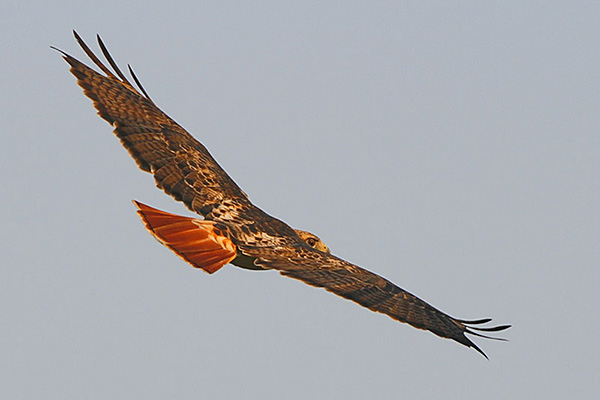
Bigger hawks do occasionally prey on smaller hawks, especially young birds. Red-tailed Hawks have been documented catching Cooper’s Hawks and other smaller hawks, although they probably don’t do it very often. In all likelihood, they only go after smaller hawks when the bird in question is sick or otherwise easy to catch.
However, the Northern Goshawk routinely catches smaller hawks. This powerful predator can catch the much smaller Sharp-shinned Hawk, and even Cooper’s Hawks! On rare occasions, they might also catch Broad-winged Hawks.
This species is also a common predator of nestling hawks and juveniles of other hawk species.
Great Horned Owls
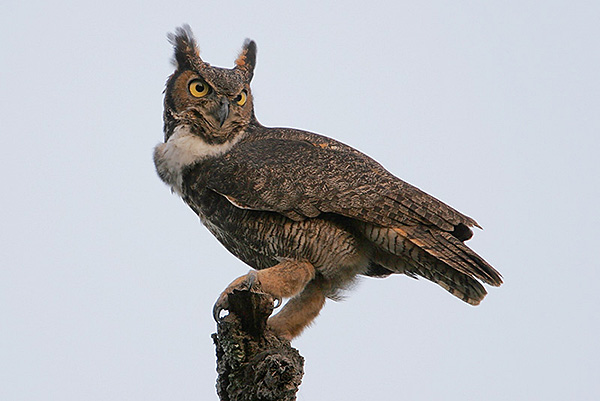
Photographs © Greg Lavaty.
In North America, the Great Horned Owl is one of the main predators of hawks. This large owl has no problem attacking, killing, and eating hawks throughout its range. It eats species as small as Sharp-shinned Hawks and even as large as Red-tailed Hawks, a bird around the same size as itself!
It has even been seen attacking and killing the big Rough-legged Hawk! Great Horned Owls eat other sorts of prey, too and only take hawks from time to time, but in some places, they are certainly the most significant predator of Broad-winged Hawks and other hawk species.
This owl is so successful at catching hawks because it’s big enough to prey on them, and attacks at night when the hawk is asleep.
Snowy Owl
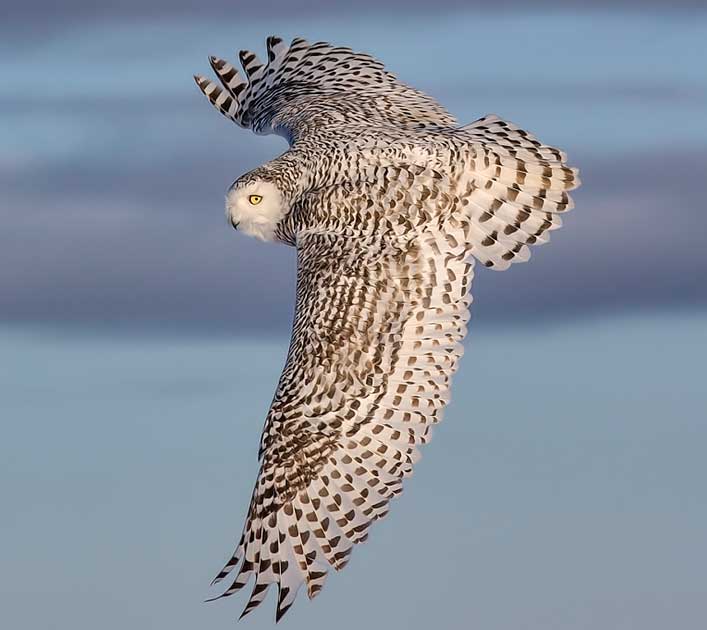
Another owl that catches hawks is the Snowy Owl of the far north. This species doesn’t eat hawks as much as the Great Horned Owl but does prey on them from time to time.
Snowy Owls catch hawks once in a while, mostly Northern Harriers. This slender hawk species lives in the same open, barren habitats as the Snowy Owl, and nests on the ground. While nesting and roosting on the ground, they can be vulnerable to Snowy Owls that catch them by surprise.
In winter, Snowy Owls can also prey on other hawk species, but probably only when they find a weak or injured hawk.
Peregrine Falcon
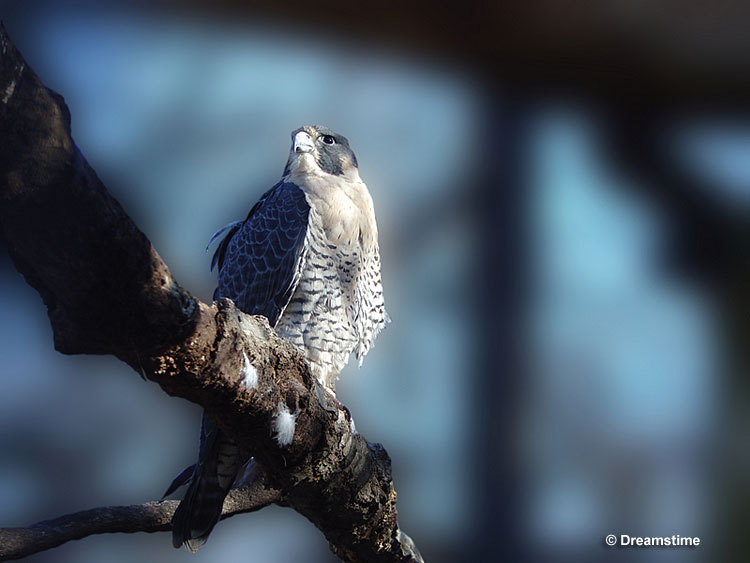
This large, fast falcon can also prey on hawks, usually the Sharp-shinned Hawk. This small raptor is similar in size to many other birds that the Peregrine Falcon preys on, and the falcon catches them in a similar fashion.
If a Peregrine sees a Sharp-shinned Hawk it thinks it can catch, the falcon dives at it and tries to slash it with its talons. However, it has to be very careful because, unlike other birds, the Sharp-shinned has sharp, needle-like talons and can seriously injure the Peregrine.
Related: What do falcons symbolize?
For this reason, Peregrines probably only attack Sharp-shinneds and other hawks that seem too weak to defend themselves.
Common Ravens
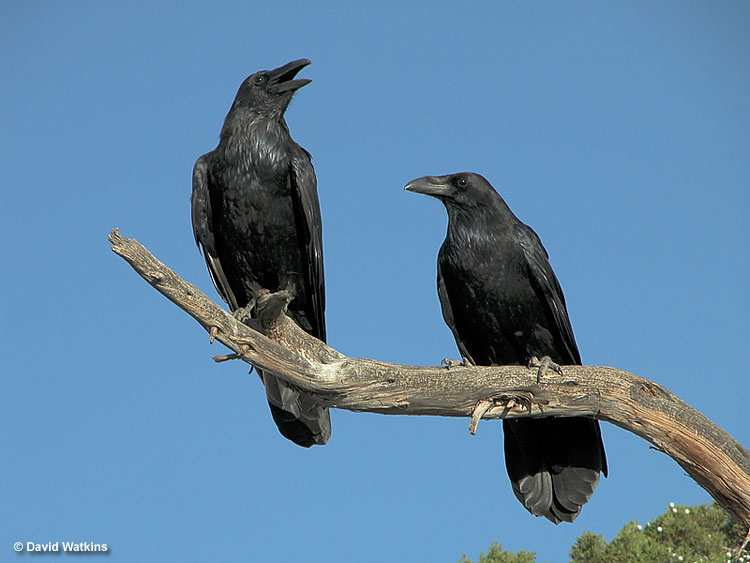
This large Corvid doesn’t typically attack adult hawks but is an important nest predator. They live in many wild areas where various species of hawks also nest. They can attack the nests of everything from Red-tailed Hawks to Broad-winged Hawks and other species.
Although Common Ravens can also attack Northern Goshawk nests, this aggressive species is usually able to chase them away. Ravens will take eggs but can also attack young birds. To attack a nest, the adult ravens often work together and may try to drive the adult hawks away, or wait until both adults have left to go hunting.
Raccoons
This mammal is another major predator of hawks. They can’t really catch hawks in flight or when hawks are hunting, but do go after them on their nests. Raccoons can prey on hawks both during the day and at night but are probably more successful at night.
During the day, the adult hawks can chase them away but can be caught by surprise in the dark of the night. Raccoons catch them by stealthily climbing up to a hawk nest and pouncing on the brooding bird and their young before they can react. They can attack Broad-winged Hawks and various other species.
What Do Hawks Eat?
Hawks eat a wide variety of small and medium-sized animals. In general, their diet is related to the size and weight of the hawk species in question. For example, Sharp-shinned Hawks are only a little bit bigger than an American Robin. They feed on sparrows and other small birds, while the larger Cooper’s Hawks preys on birds like Mourning Doves and woodpeckers.
Related: Do hawks eat other birds?
The big and hefty Red-tailed Hawk feeds on everything from mice to squirrels, snakes, and pigeons. Other medium-sized hawk species tend to catch a lot of rodents, frogs, and small snakes along with the occasional small bird.
In open habitats, Rough-legged Hawks and Swainson’s Hawks catch voles and other rodents, while the Swainson’s also eats grasshoppers, especially on its wintering grounds in Argentina!
In open wetlands, the Northern Harrier hovers and glides low over the ground in search of small waterbirds, sparrows, rodents, rabbits, and other prey items. Once in a while, this species also catches small ducks.
The largest hawk in North America, the Ferruginous Hawk, feeds on small to medium-sized mammals. This big raptor catches jackrabbits, prairie dogs, and ground-squirrels.
Yet another hawk that preys on rabbits is the Harriss’s Hawk. Members of this species actually hunt together to catch rabbits in arid habitats!
Fun Facts
- Hawks that manage to catch and eat a juvenile hawk also benefit in another important way. When they kill another hawk, they also help eliminate competition.
- Crows often gather together to attack hawks. However, they don’t do this to try and eat the hawk. They do it because they view the hawk as a threat and want to drive it away from their home range.
- Hawks usually nest high in a tree or on a cliff to protect their young from Raccoons and other mammalian predators.
- Hawks can become aggressive near their nests. Most species will dive and claw at people or animals climbing to their nest. The Northern Goshawk can even attack people walking on the ground far below the nesting tree!
- Hawk nest cams have shown how Eurasian Eagle-Owls can attack the same hawk nest night after night.
- Foxes are sometimes believed to attack hawks. However, these canines are pretty small and rarely come into contact with adult hawk species. In all likelihood, foxes seen feeding on dead hawks have probably found the carcass of a roadkilled hawk.
- Juveniles of several tropical hawks have plumages that make them look like larger and more powerful hawks or eagles. This mimicry helps protect the unwary juveniles from potential jungle predators.
- The Hawaiian Hawk doesn’t have any known natural predators. The main threats faced by this Hawaiian endemic come from habitat destruction or persecution by people.

